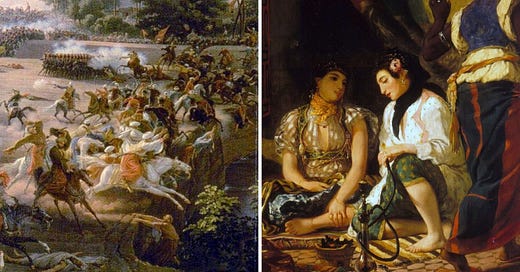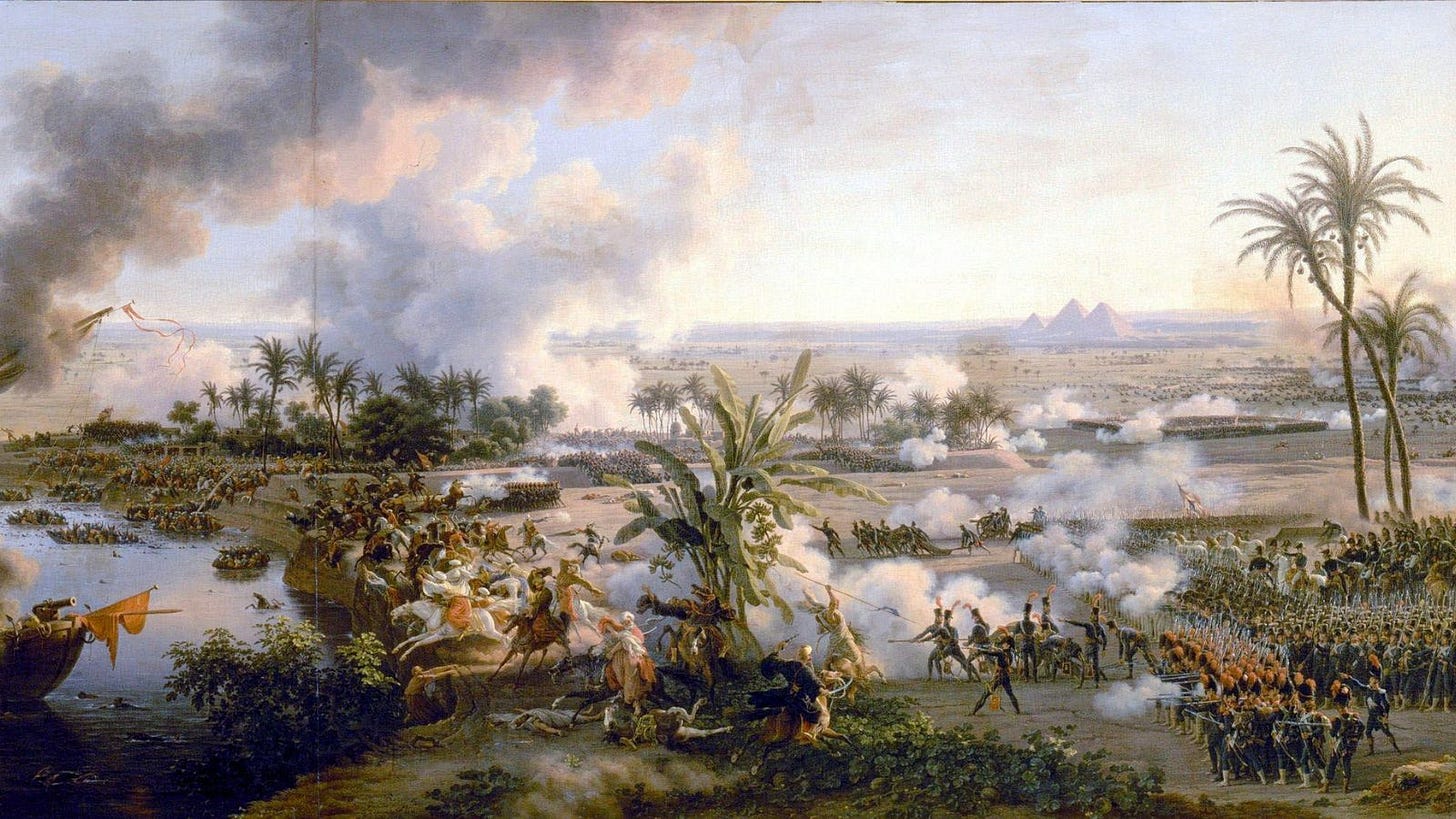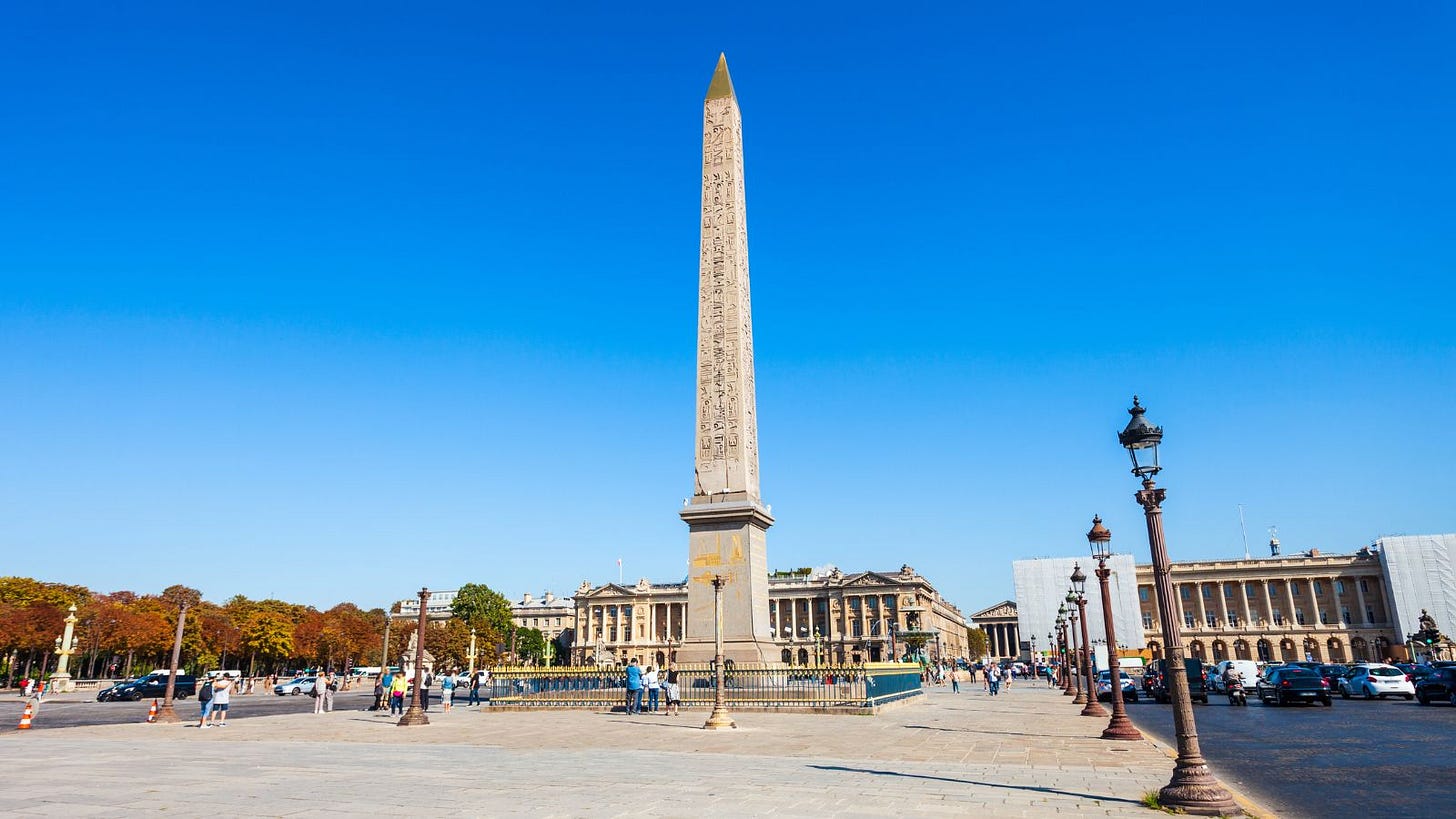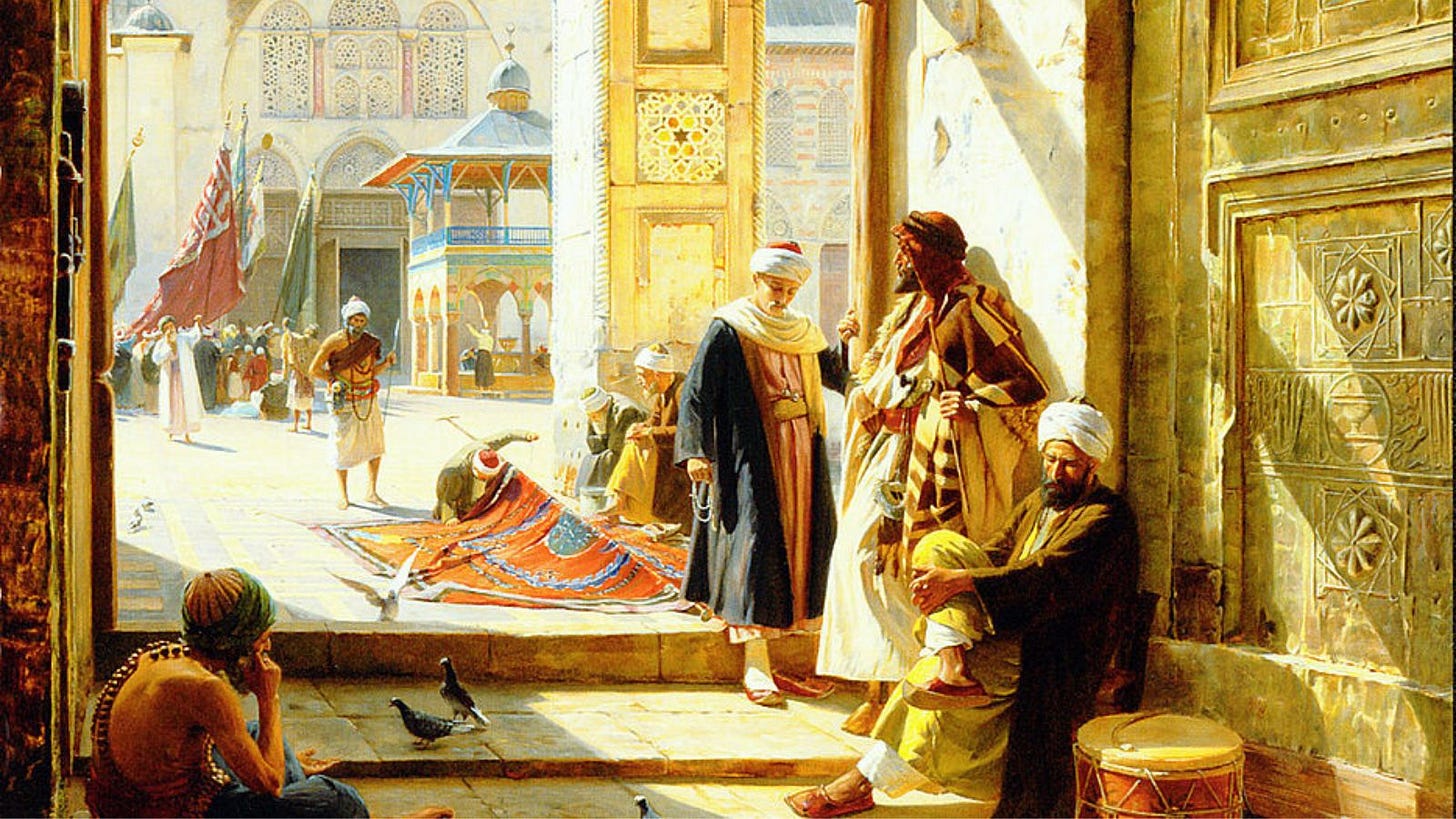Europe and Islam are not Compatible. But not for the Reason you are Thinking of (2)
Part 2: Orientalism redefining Europe as a Secular Superpower
Check out part 1 here.
“Soldiers, from the summit of these pyramids forty centuries look down upon you"
- Napoleon Bonaparte inspiring his armies, before the battle of the Pyramids.
We too casually brush over Napoleon’s invasion of Egypt in 1798 in history class.
We learn of it as a mere conflict, one of many, that ended rather quickly when Napoleon had to go back to France in 1799, due to the fragility of the political situation there.
Not without some souvenirs of course.
What few mention is the army of scholars, writers and scientists that accompanied Napoleon during his invasion, tasked with studying the local populations as much as possible during the expedition.
The invasion of Egypt was a watershed moment for Europe, bringing an entirely new discipline to the foreground, Orientalism.
Orientalism, at the surface, was the academic, sociological and anthropological study of the “Orient”.
At its core, it was a political vehicle, designed to implement a budding colonial and imperialist project taking shape in Europe.
A Europe that was building its own mythology, again.
That it transcended to a new level of civilization with the Enlightenment, shedding the shackles of religion and irrationality.
A Europe that now had a moral duty to share its civilizing ways with the entire world, in what was aptly named its “mission civilisatrice”.
Orientalism thus became a pseudo-scientific discipline, tasked with establishing a hierarchy of civilizations, with Europe at the top, in stark opposition to the world around it.
As Edward Said put forward in his seminal work, Orientalism, the discipline of Orientalism would allow Europe to define a new identity for itself, secular at its heart, built upon a sense of superiority over the Muslim and Arab world.
The Muslim and Arab world was then depicted as a fantastical realm, filled with wonder and magic, fueled by feverish images of the 1001 nights, opulent pashas and alluring harems.
Yet it was also inferior, childlike and immature, inherently incapable of progress. It represented everything the West had overcome.
Thus it was in dire need of saving from modern Europe.
In their studies, Orientalists saw everyone from Morocco to Egypt to Syria to Iran as the same, an Oriental, sharing a unified identity across the board.
The Arab and Islamic world was striped of any cultural agency, gradually subjugating the task of defining its own identity to European scholars.
Said thus stipulates how the Muslim and Arab world was reduced to a static monolith, the “Orient”, which could then be put nicely in opposition with “Europe”, a constantly evolving civilizing light to the world.
Orientals were often depicted as weak, irrational and violent.
Westerners, in opposition, were strong, progressive and driven by logic.
This mutually exclusive binary of the Orient and the Occident was central to Orientalist thought.
The “Orient” became a sounding board for European ideals.
To Europe for example, the Ottoman Empire was in full decay due to its inability to separate the religious and the secular, and in doing so celebrating the leap that Europe had made by leaving that way of life behind.
The Ottoman Sultan, put forward as the supreme religious and political leader of the Orient, was also the ideal caricature to showcase the critical European attitudes to the days of Papal tyranny.
These images were thus built as vehicles to showcase the moral and civilizational superiority of Europe.
The concept of "European" emerged then in a new form, attempting to create a new continental identity secularized by the Reformation and the Enlightenment.
It replaced “Christendom” with “Civilisation” in the Western paradigm, inspired by the republican values of the French revolution.
Race then became the way to separate between nations, as Europe, now a society built on science and reason, could not assert superiority by resorting to religion anymore.
The French writer Ernest Renan argued that the soul of Western culture was anchored in science with all the possibilities this contained for creating what he termed ‘social superiority’.
All of this not to forget Orientalism’s true objective.
Orientalism’s true objective was to provide a rationale to French and British colonial rule.
The civilizing ideal of Europe became an assimilationist project that needed to subordinate, and if need be, destroy, the culture of colonized nations.
The British writer Charles Pearson saw in the decline of the Ottoman Empire an opportunity for Europe to annex territories for a ‘higher race’.
Alexis de Tocqueville, corresponding with the racist ideologue the Comte de Gobineau, conceded that Islam was the main reason for the ‘visible decadence of the Islamic world’ which would, like everywhere else, eventually succumb to European imperial domination.
There is no need to dwell on the colonial history that emerged from this, as we are all (perhaps painfully) aware of it.
What should be noted is that many of these tired Orientalist tropes are alive and well today, 200 years after the start of this project.
One only needs to watch (most of) the western coverage of the Gaza war currently unfolding to experience it firsthand.
Europe does still see itself as “not compatible” with Islam, as discussed last week.
It is important to bring a level of nuance here.
Identity building is a complex exercise, and one cannot reduce it in any way, shape or form to a single reason, let alone the identity drivers of an entire continent.
The relationship between the “East” and the “West” is rich and multi-faceted, from a clash of identities as we covered previously, to rich trade and mercantile exchanges, cultural crossovers, and shifting political alliances.
The Ottoman empire was an active part in many of the major conflicts that occurred between European powers, simultaneously ally to some and enemy to others.
Nor can we say that there is one shared view across all of European society when it comes to their perception of the Muslim world.
The correct claim here is that out of the many drivers of European identity, one of the main (and most influential) ones was having Islam as the “Other”.
It began as we first saw in the Crusades, taking a staunchly Christian nature, and then transformed into a secular endeavor, via the Orientalist tradition.
But it all boils down to the same conclusion:
Europe is what Islam is not.
Except that in this case, the conclusion has come first.
Then an entire argument was established to prove this, emphasizing the superiority of Europe over the muslim world, be it through religion and morality, or through sociology, anthropology, and academia.
Thus, in a way, Europe and Islam are not compatible not at a values level, not in objective measure, but, again, simply because Europe is what… Islam is not.
A square is not a circle.
Not by any fault of the circle, but simply because it can never be a square.
Be well,
Majd
The Green Pill will be back next Thursday. In the meantime, check out the rest of our content here.
Did you enjoy this issue of The Green Pill? Help us spread the word then. Think of one specific person around you that might enjoy this content, and share with them.
Sources:
The Crusades and the Near East: Cultural Histories, Reviews in History, Dr Jonathan Harris, Feb 2011
How Islam Created Europe, Dr. Robert D. Kaplan, The Atlantic, May 2016
Root out this sinister cultural flaw, Karen Armstrong, The Guardian, 06 April 2005
How Muslims Made Europe, Kwame Anthony Appiah, The New York Review, November 6, 2008
How Islam shaped the West, Rowan Williams, The New Statesman, 15 May 2019







